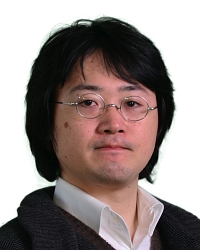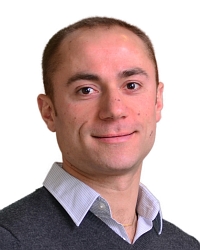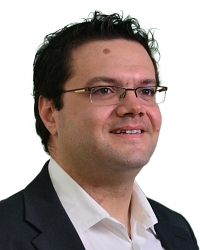TR2025-115
Multi-Band Wi-Fi Neural Dynamic Fusion
-
- , "Multi-Band Wi-Fi Neural Dynamic Fusion", IEEE Transactions on Wireless Communications, DOI: 10.1109/TWC.2025.3538463, Vol. 24, No. 5, pp. 3698-3714, February 2025.BibTeX TR2025-115 PDF
- @article{Kato2025jul,
- author = {Kato, Sorachi and Wang, Pu and Koike-Akino, Toshiaki and Fujihashi, Takuya and Mansour, Hassan and Boufounos, Petros T.},
- title = {{Multi-Band Wi-Fi Neural Dynamic Fusion}},
- journal = {IEEE Transactions on Wireless Communications},
- year = 2025,
- volume = 24,
- number = 5,
- pages = {3698--3714},
- month = jul,
- doi = {10.1109/TWC.2025.3538463},
- issn = {1558-2248},
- url = {https://www.merl.com/publications/TR2025-115}
- }
- , "Multi-Band Wi-Fi Neural Dynamic Fusion", IEEE Transactions on Wireless Communications, DOI: 10.1109/TWC.2025.3538463, Vol. 24, No. 5, pp. 3698-3714, February 2025.
-
MERL Contacts:
-
Research Areas:
Communications, Computational Sensing, Dynamical Systems, Machine Learning, Signal Processing
Abstract:
Wi-Fi channel measurements across different bands, e.g., sub-7-GHz and 60-GHz bands, are asynchronous due to the uncoordinated nature of distinct standards protocols, e.g., 802.11ac/ax/be and 802.11ad/ay. Multi-band Wi-Fi fusion has been considered before on a frame-to-frame basis for simple classification tasks, which does not require fine-time-scale alignment. In contrast, this paper considers asynchronous sequence- to-sequence fusion between sub-7-GHz channel state information (CSI) and 60-GHz beam signal-to-noise-ratio (SNR)s for more challenging tasks, such as continuous coordinate estimation. To handle the timing disparity between asynchronous multi-band Wi-Fi channel measurements, this paper proposes a multi-band neural dynamic fusion (NDF) framework. This framework uses separate encoders to embed the multi-band Wi-Fi measurement sequences to separate initial latent conditions. Using a continuous-time ordinary differential equation (ODE) modeling, these initial latent conditions are propagated to the respective latent states of the multi-band channel measurements at the same time instances for a latent alignment and a post-ODE fusion, and at their original time instances for measurement reconstruction. We derive a customized loss function based on the variational evidence lower bound (ELBO) that balances between the multi-band measurement reconstruction and continuous co- ordinate estimation. We evaluate the NDF framework using an in-house multi-band Wi-Fi testbed and demonstrate substantial performance improvements over a comprehensive list of single- band and multi-band baseline methods.



